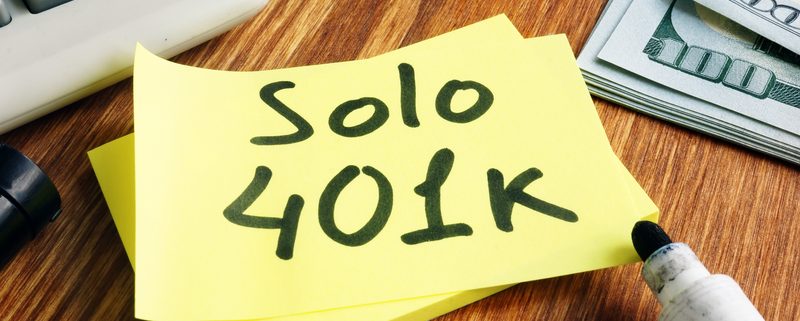What Do Investors Need to Open a Self-Directed Solo 401(k)?
For people who traditionally invest through an employer, the 401(k) is one of the most recognizable forms of retirement investing. In fact, we often talk about our 401(k) plans as though they represent our entire retirement portfolio, whether or not that’s the truth. But there is more an investor can do with a 401(k), even if they were to work independently. That’s the case with a Self-Directed Solo 401(k), a plan in which investors can take their financial future into their own hands.
But while it’s easy to see why someone might enjoy the high contribution limits and freedom present with a Self-Directed Solo 401(k), that doesn’t mean they’re for everybody. What do you need to open a Solo 401(k) plan and start investing on your own? Here’s what we can tell you.
Know the Basics of the Self-Directed Solo 401(k) Plan
The first step is to learn the basics of what makes this plan so effective for many investors. That means learning about the account. A Solo 401(k) plan represents a “one-participant” 401(k) plan, which means that you can’t keep it company-wide—essentially meaning that you must be self-employed to qualify. You can make contributions to your retirement under the same rules that make the entire 401(k) provision work. However, because you’ll be self-directing this plan, you should also consider what sorts of options you have that you hadn’t considered if you were thinking about an employee-sponsored plan.
Self-directing is a process in which investors can choose their own retirement assets, provided those assets fit the basic rules of retirement investing. You’d work through a custodian, often a Self-Directed IRA administration firm, who handles the paperwork and administration on these accounts. Finally, you’ll be free to choose the investments you want to purchase with the account, which means potentially expanding a retirement portfolio to assets as diverse as private stock, precious metals, tax liens, and even real estate.
This isn’t something that happens overnight for most investors. It takes some research and time to make sure that 1) you qualify for the Self-Directed Solo 401(k) you seek and 2) that it’s the right plan for your specific situation. And although you can open an account with a Self-Directed IRA administration firm, it’s up to you to decide whether the move is best for you.
What DO Investors Need to Open a Self-Directed Solo 401(k)?
With that in mind, let’s get back to the original topic of this post: what it takes for an investor to open a Self-Directed Solo 401(k). It typically takes two elements.
First, the investor should have some self-employment activity, which we can define as receiving self-employment income. This makes an investor “solo” for the purposes of investing in this type of account. A common arrangement is for an entrepreneur or a freelancer to open a Self-Directed Solo 401(k) plan.
Second, the investor should not have any full-time employees at the company in which they work. For example, a Single Member LLC would be a valid arrangement for an investor; however, a company with three employees would then disqualify.
From there, there is plenty for an investor to like about a Self-Directed Solo 401(k), including high contribution limits and the ability to invest in a wide range of retirement assets. Interested in learning more about how these accounts work? You can continue reading about these accounts at our Self-Directed Solo 401(k), where there is specific information about their use.
Interested in learning more about Self-Directed IRAs? Contact American IRA, LLC at 866-7500-IRA (472) for a free consultation. Download our free guides or visit us online at www.AmericanIRA.com.






